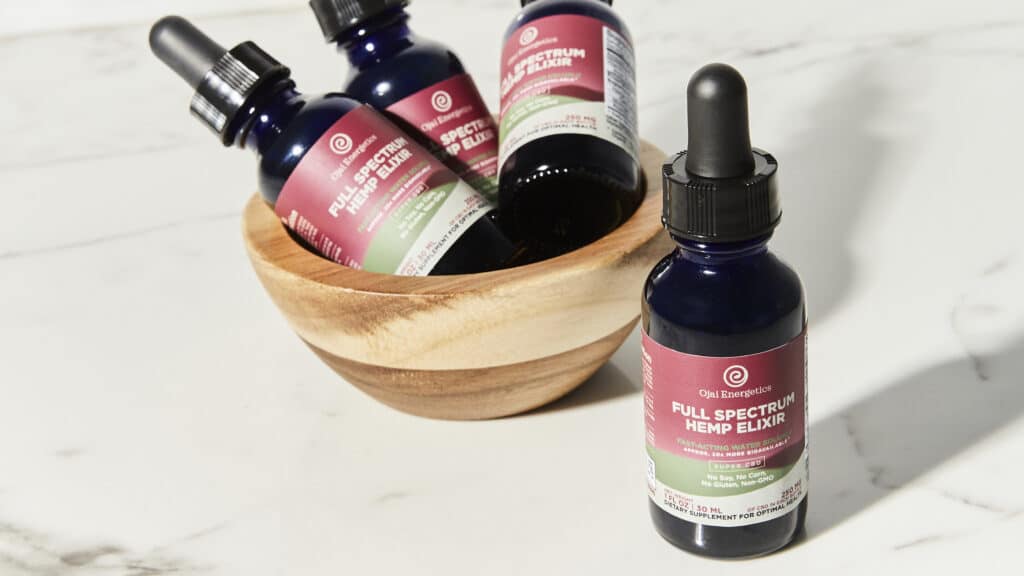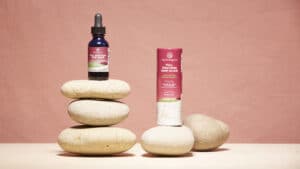If you’ve ever found a half-used CBD oil bottle in the back of your cabinet and wondered whether it’s still good—you’re not alone. Like most wellness products, CBD oil does expire. Understanding its shelf life, how to store it, and when to replace it can help you get the most out of your product. It also helps to know how to use CBD oil correctly to ensure every dose counts.
Does CBD Oil Expire?
Yes, CBD oil does expire, though its exact shelf life depends on the formulation and how it’s stored. For example, Ojai Energetics’ full spectrum CBD oil is shelf-stable for up to 2 years when unopened, and up to 1 year after opening, provided it’s stored correctly.
Factors That Affect Shelf Life
- Several factors influence how long CBD oil remains fresh and effective:
- Carrier oil: MCT, hempseed, or olive oil each have different natural lifespans. Learn more about what to look for when buying CBD oil, including carrier oils and formulation details.
- Extraction method: Clean extraction like CO₂ supports long-term stability.
- Packaging: Amber glass helps reduce UV exposure.
- Storage: Cool, dark, and dry storage conditions are key to maintaining freshness.

Typical Shelf Life of CBD Products
While no two formulations are exactly alike, here’s a general guideline for product longevity:
|
Product Type
|
Average Shelf Life
|
|---|---|
|
CBD Oil Tinctures
|
Up to 2 years unopened; 1 year opened
|
|
Water-Soluble CBD
|
12–18 months
|
|
CBD Capsules
|
12–24 months
|
|
CBD Topicals
|
12–18 months
|
How to Store CBD Oil Properly
Proper storage can extend the life of your CBD oil and maintain its integrity.
Best Practices for Storage
- Cool, dark location: Store CBD in a pantry, drawer, or cabinet away from direct sunlight.
- Avoid heat exposure: Keep it away from stoves, windowsills, or hot cars.
- Tightly sealed: Always close the cap firmly to limit air and moisture exposure.
- Refrigeration (optional): Though not necessary, some users choose to refrigerate CBD for added freshness—just note it may thicken slightly.
Signs Your CBD Oil May Have Gone Bad
While expired CBD oil isn’t typically harmful, it may be less effective and unpleasant to use. Look for these signs:
What to Watch For:
- Change in smell: Rancid, sour, or “off” aromas suggest spoilage.
- Thickened texture: Overly cloudy or sludgy oil could indicate degradation.
- Change in color: A darker color may suggest oxidation.
- Tastes off: If the flavor is drastically different or unpleasant Tastes off: If the flavor is drastically different or unpleasant (see what CBD oil should taste like), it’s likely time to toss it., it’s likely time to toss it.
Does Expired CBD Lose Potency?
Yes, CBD naturally breaks down over time, reducing its effectiveness. An expired product may no longer deliver the expected results, even if it hasn’t gone “bad” in the traditional sense. That’s why using CBD within its intended shelf life is important for consistent support.
Can I Use CBD Past Its Expiration Date?
While using expired CBD oil isn’t inherently dangerous, it’s generally not recommended. The compounds may have broken down, making the product less useful. For the best results, replace old oil with a fresh, lab-tested batch.
Frequently Asked Questions (FAQ)
Freezing CBD oil isn’t typically necessary and may alter its texture. Refrigeration or a cool pantry works well for long-term storage.
Sometimes. Natural flavorings can shorten shelf life if they degrade or separate more quickly than unflavored oils.
Cloudiness alone isn’t always a sign of spoilage—it can occur with temperature changes—but if it’s accompanied by smell or taste changes, it’s best to replace it.
Final Thoughts
CBD oil doesn’t last forever—but with proper care, you can enjoy your product for up to two years. By storing it correctly and watching for signs of spoilage, you’ll ensure that your investment delivers its full value and supports your wellness routine with consistency.
Not sure if your CBD oil is still fresh?
Explore our Full Spectrum Elixir and CBD Starter Kit, made with clean, stable ingredients and designed for optimal shelf life with water-soluble technology













